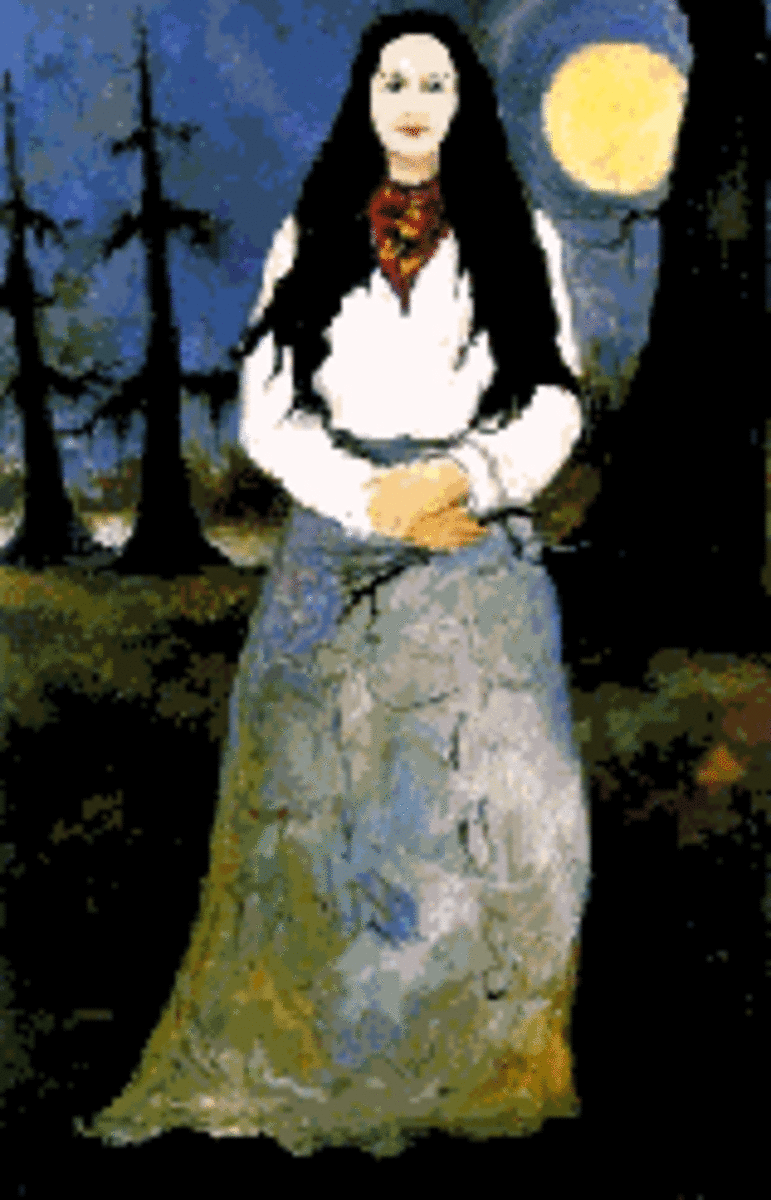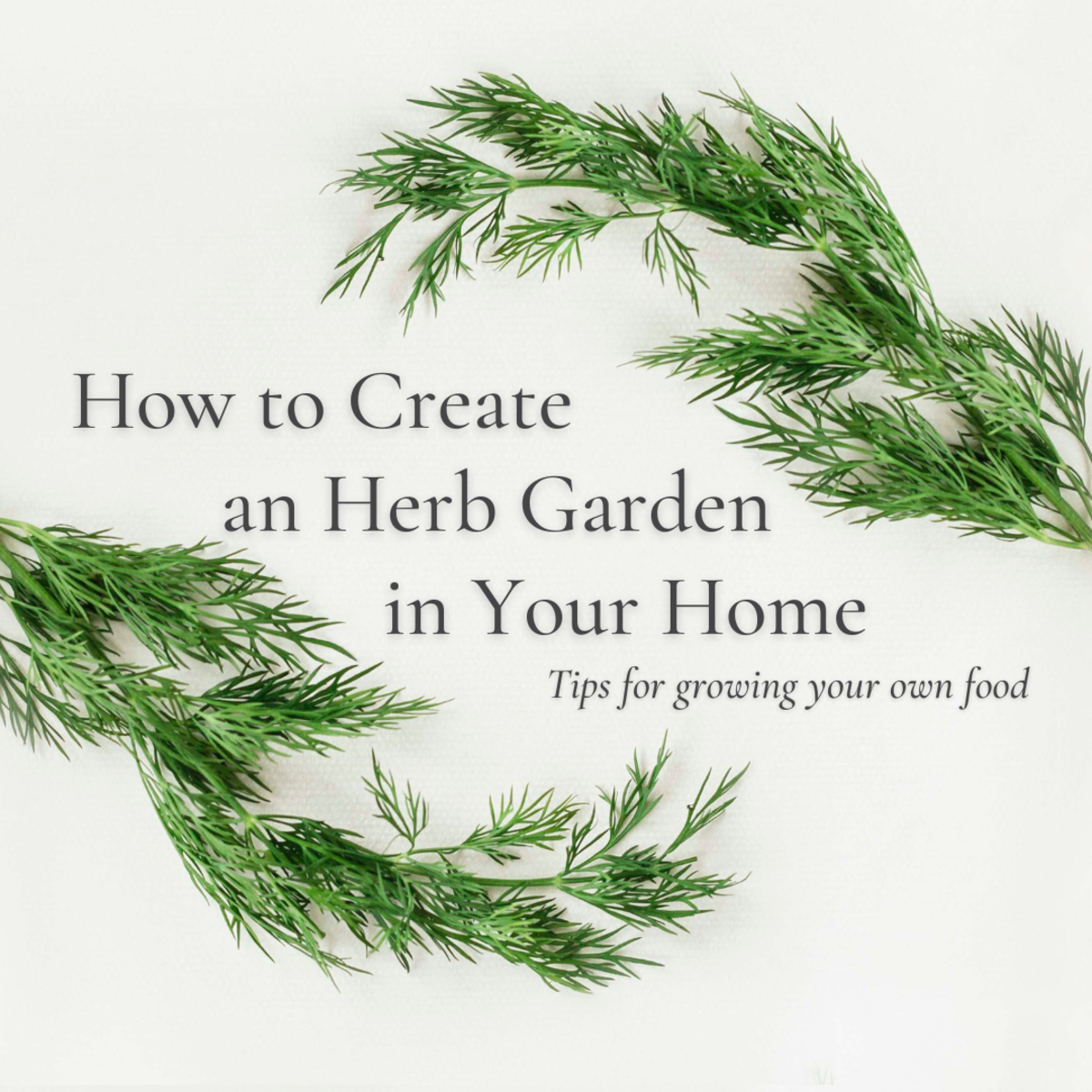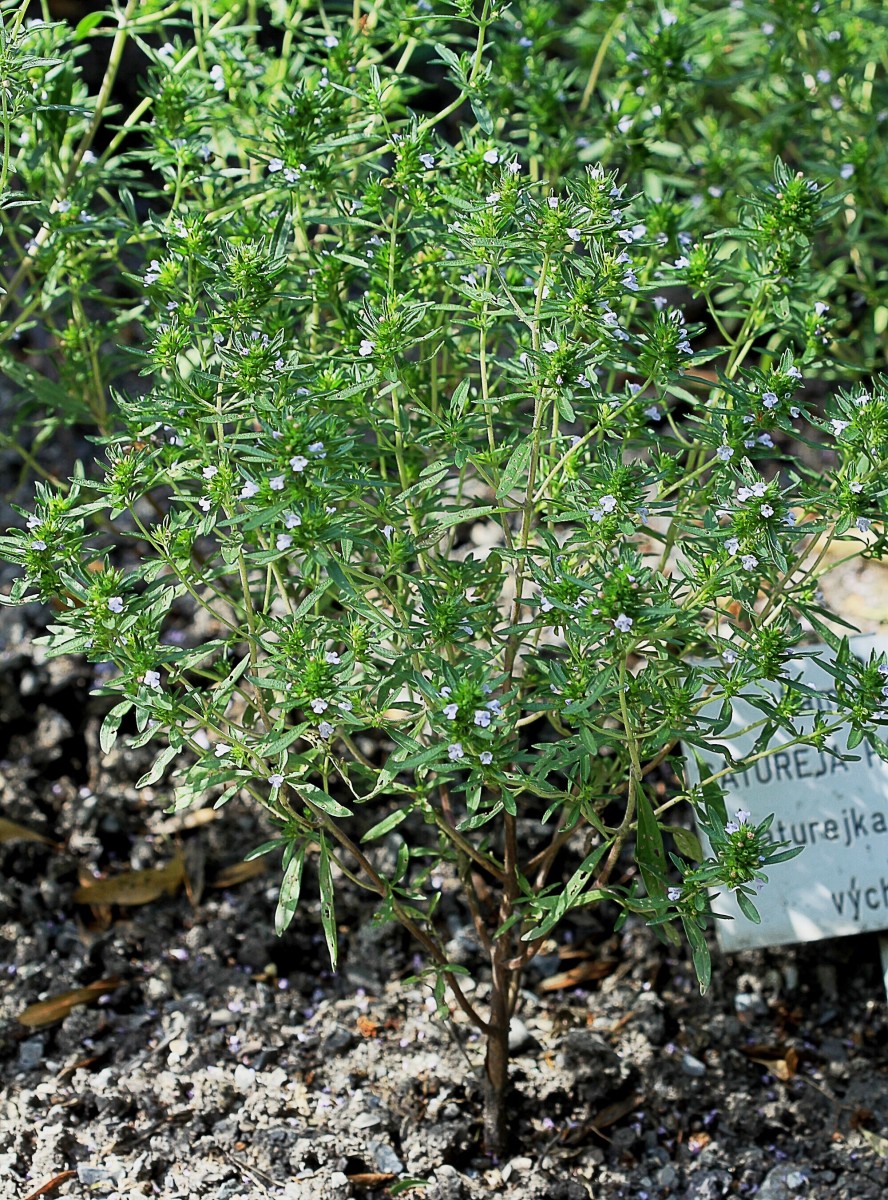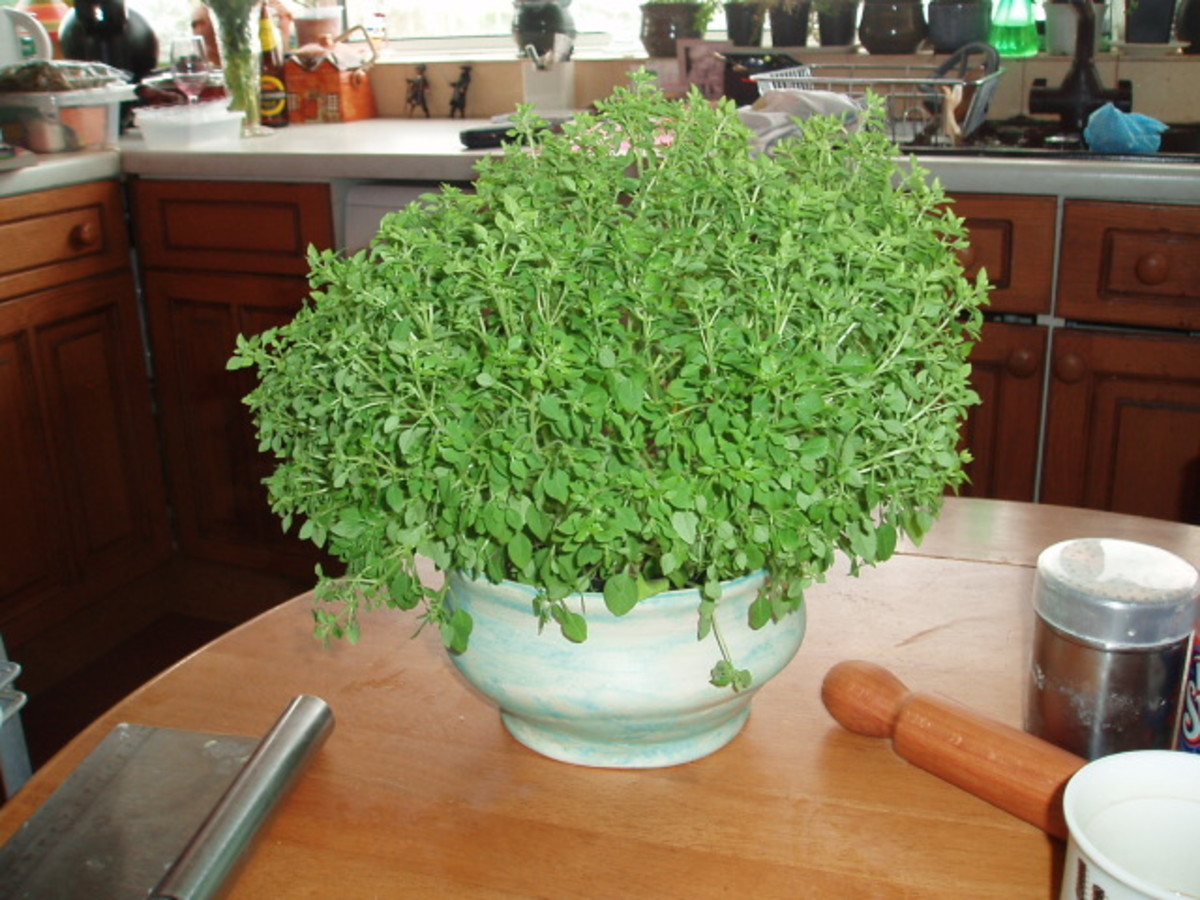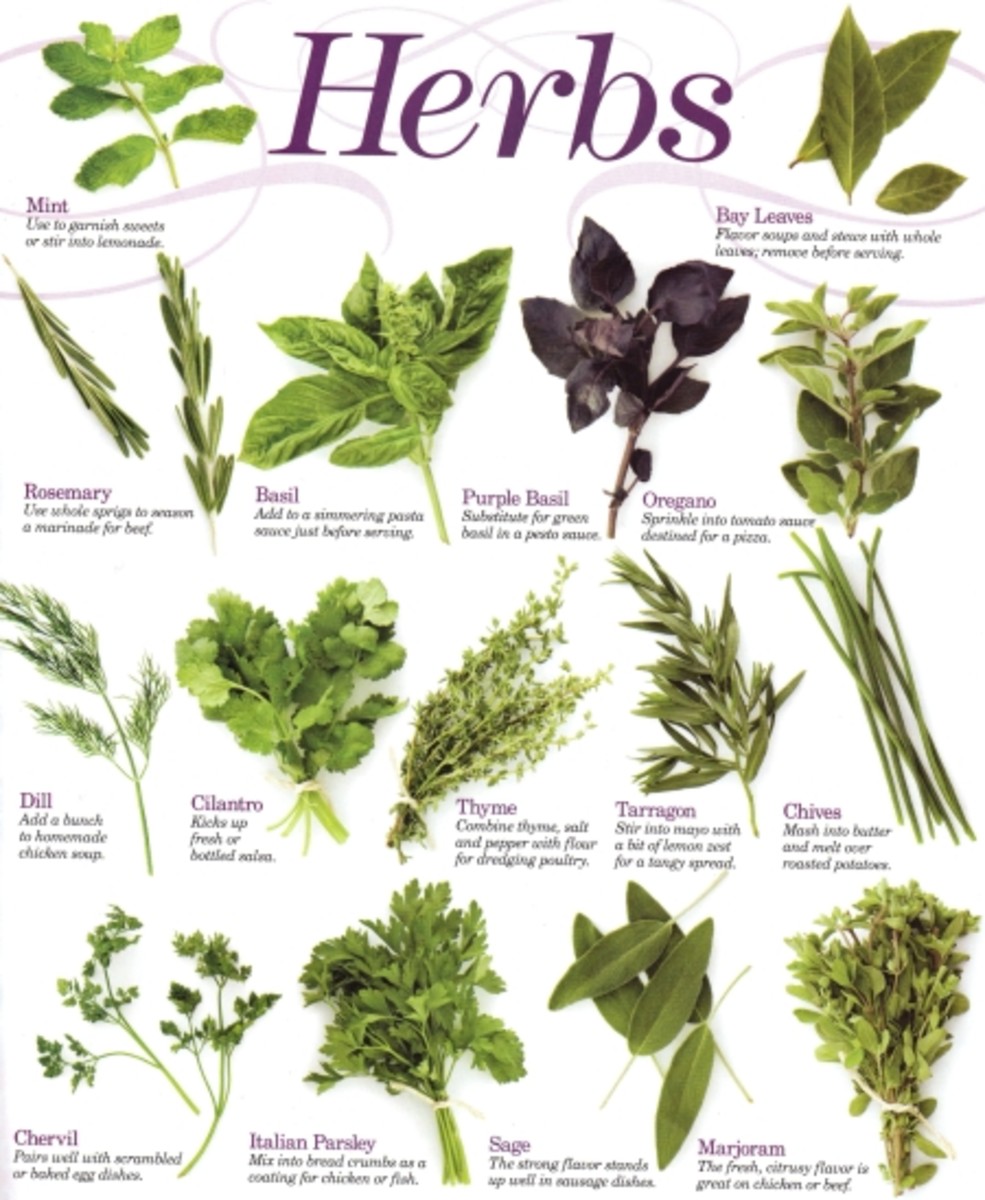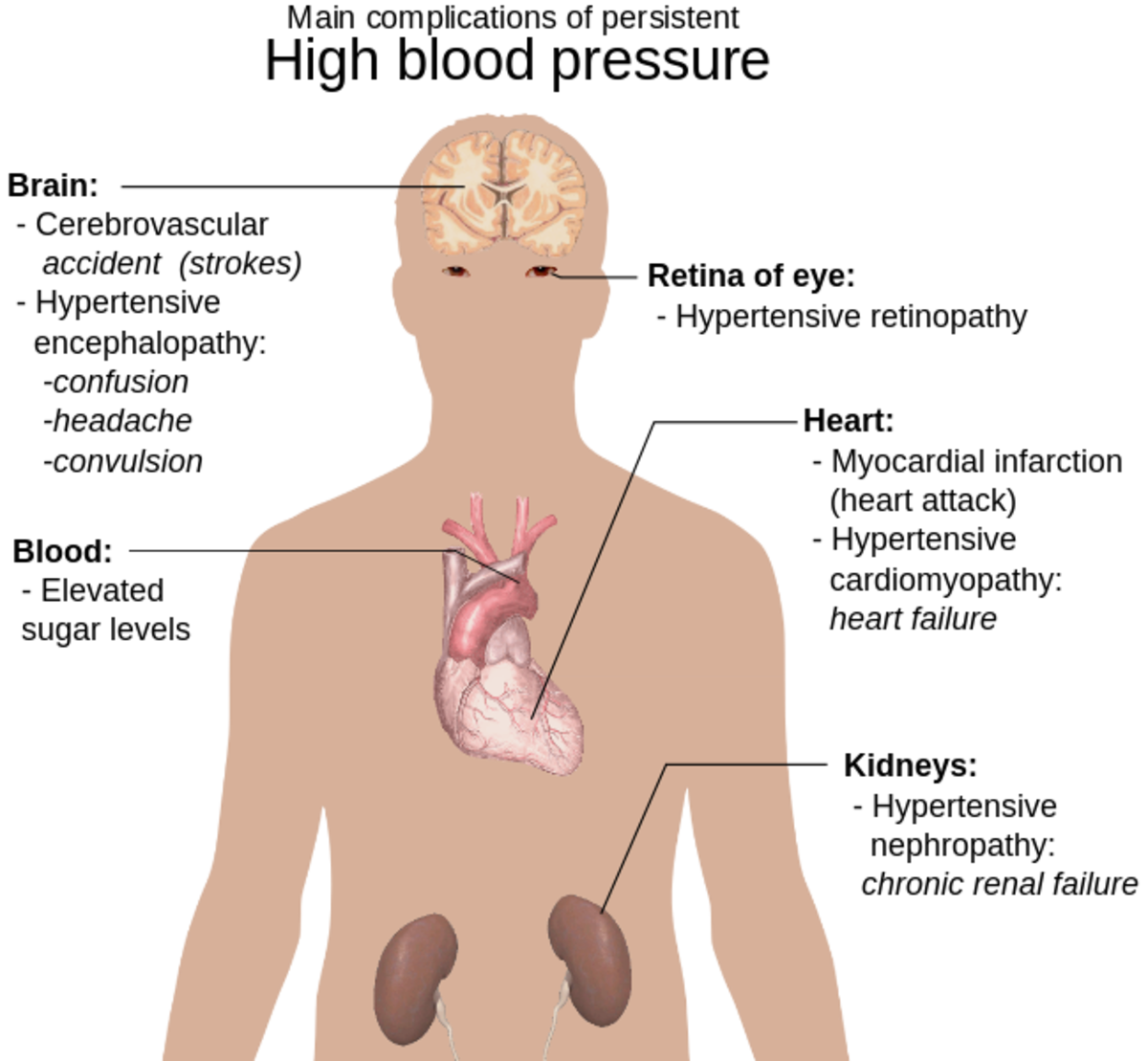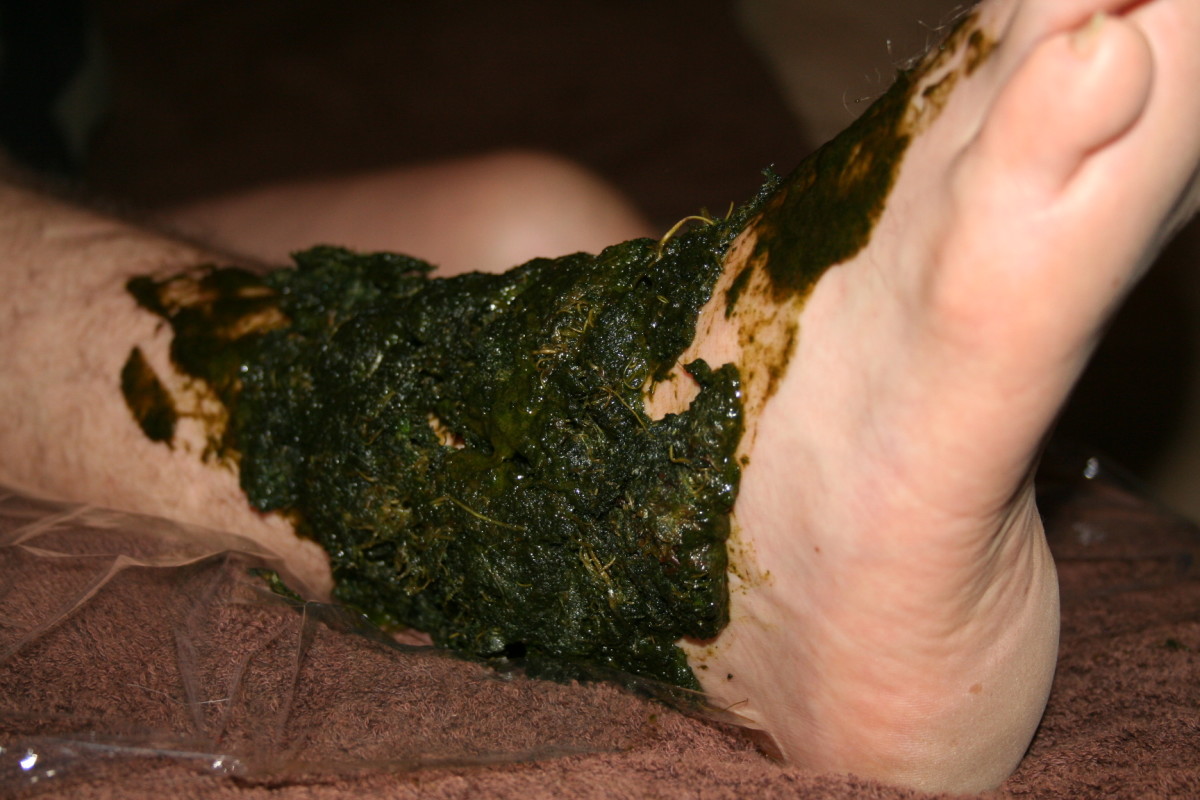Confessions of a Cajun Traiteuse - Herbs - Part III
The drying and preparation of various herbal remedies was family affair, both non-optional and necessary. Herbs were both for healing and cooking. I feel blessed that knowing how to grow, care for, harvest, and understanding the uses for these common herbs were a part of my Cajun heritage and my early training as a Cajun traiteuse.
Once a House, Now a Tool Shed
The locked tool shed where Emile kept all of his secret Cajun remedies, hadn't always been a tool shed. Originally, it was Emile's great-grandpere, Jean Charles Navarre's living quarters, back before the roof blew off and it partly burned down. After sitting vacant and exposed to the whims of mother nature, by the 1950s it had been repurposed to becoming part tool shed and part man cave to get away from the women folk.
The outside was plastered Acadian/Cajun typical with bousillage mixture of burned, crushed to powder oyster and clam shells and mixed with Spanish moss, similar to the use of cement. This bousillage not only kept the outside outside, but it also insulated the building from the heat and humidity. Inside consisted of one room downstairs, one tiny bedroom upstairs, an attic, a porch, a tiny cellar of sorts, and an addition. It had aging cypress walls, bleached a gray-white color, of a hue no paint color could ever match.
The once cypress hewn roofing, had been replaced by a corrugated tin roof. Rust colored, the sound of steady rain on a tin roof, still remains one of the most soothing sounds. As with most Louisiana buildings, it sat high on pillars or blocks, on the highest part of the property, to wade out the ever returning flooding after storms.
The grenier attic was reached by a short ladder, not from inside, but from the outside. The floor to ceiling attic space, at the apex, wasn't over four feet tall. You didn't walk once up there, you crawled around. In the bayou country, this is known as a garconiere. A garconiere had a specific purpose, that of housing the older boys as the family grew. At some point, a trap door to this area was added. Hirma said it was way of entering the downstairs in emergencies and bad weather. However, by the 1950s, it had become a place to dry herbs, which would not be an option had it not been for the bousillage.
The building itself was a place of mystery and awe, filled with potions, drying herbs, mason jars, a copper still, hand-tools, and projects in various states of completion. Surprisingly, it was occupied, not just by spiders and other Southern Louisiana bugs -- but by an evil monster. She even had a name.
Polly Was a Mean Old Girl
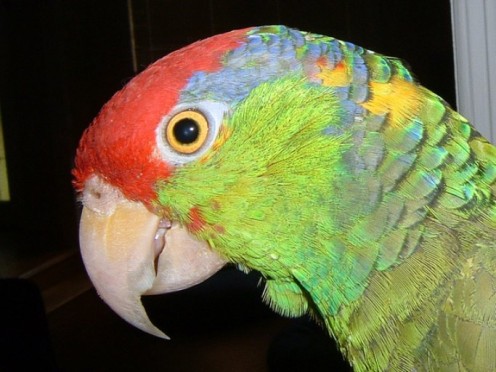
A Yellow Headed Parrot
A red-headed parrot that called Emile, Pepere (Daddy) and called herself, Polly -- had run of the tool shed. She hadn't always been relegated to living in the tool shed, previously having had run of the main house. Hirma had evicted her after one too many "accidents" in her kitchen.
She was mean old bird who didn't like children. We were the intruders in her love for Emile. Always afraid of her beak, I quickly learned (as did the other grandchildren and great-grandchildren) to look out for Polly before coming into the tool shed with Emile. The older she got, the meaner she became.
She liked to hide and sneak up on your bare feet (we were mostly always barefoot) and nip at your toes with her sharp beak. One of her favorite hiding places was under the workbench, and just when you thought she was napping on the biting job, she'd get you and draw blood.
We children could escape to the upstairs bedroom faster than Polly, which was reached via a short stairway. Once she found us though, it was difficult to get away from her. Escape back down the the main room was often a lost cause, because Polly could come down faster than we could run. She slid down rail-thin banister, and we couldn't.
If Only We Had Known - Polly Had Us Trained
Skullcap Herb
This herb was introduced to our family by way of our ancestor, Catherine Annenontak. It is a powerful healing herb, that today is used as an anti-inflammatory and widely used to treat mental disorders. It is even one of the Chinese 50 essential herbs.
Emile sold it to drug companies, who as I understand it, used it in remedies for epilepsy, insomnia, anxiety, and for helping with withdrawal symptoms of certain addictive drugs.
It should never be given or taken by any woman in childbearing years, who may be pregnant or not know if she is pregnant (it will cause miscarriage). Native Americans used it in rituals to young girls who were near or at the age of menstruation to bring on the onset.
Emile sometimes used it to treat headaches, sore throats, and coughs. Today, it is being used as an alternative medicine for ADD.
Jimson - The Herb Called a Weed
While Emile and Hirma both used this herb and sold it to the drug companies of their time -- today, it is usually referred to by most as a weed, It is addictive, and has some scary side-effects. Alternative extracts of this herb are available. I do not recommend it's use, due to the number of poisonings that occur each year, particularly among thrill seeking teens.
Gardens of Necessity
The garden was of necessity, but it was also a garden of pride. No weeds would have dared to grow there, lest they end up in the chicken yard. In Cadien, herbs and weeds were herbe. The weeds though, were referred to grandes herbes. We kept enough chickens for our own use, plus surplus for egg money.
Emile saw to it that there was always a couple of bantam chickens that belonged to me. By day, they roamed freely and by night, they retired to their own safe little abode where alligators and other predators couldn't get them as easily. Their little log chicken house had been built on a bank of the bayou, where a human skeleton had been found, but that is another hub.
It was a source of income for both Emile and Hirma, to gather leaves and roots to be dried and shipped to drug firms in St. Louis and New Orleans. Mostly, this consisted of skullcap and jimson leaves, which were plentiful. They struggled for years trying to earn extra income with wild mayapple roots, but they were scarce and difficult to find.
Leaf Days
If it was a leaf day, we would start out as soon as the sun had dried the dew from the leaves. Emile with his big burlap sack and me with my smaller flour sack. We would walk for miles and not return until just before supper.
Once home, the leaves were spread to dry on old sheets or blankets spread on the floor of the tool shed attic. The leaves had to be stirred frequently to dry evenly, that was my job. Naturally, the leaves shrank as they dried. This made room for the fresh ones to be spread.
It was on a late spring leaf day that Polly had had enough of us leaving her behind to watch the herbs dry. For us, it had been a very productive day. I was particularly proud of my first find of mayapple roots, and was basking in Emile's praise. Each trip out, he'd give me a shopping list of sorts. The list consisted of Cadien names of common herbs and we would race to see who could find them the fastest.
I didn't win the race, but at least I had found the elusive mayapple that Emile had been searching for. It's an easy plant to spot, as it looks like a closed umbrella in the early spring. Drug companies of yesteryear, paid top dollar for this plant. Emile was so pleased with me spotting it, that he promised to take me to town with him. I was so happy, I skipped back nearly the whole way home.
We took our bounty out to the tool shed. Strangely, it was quiet. I say strangely because, as anyone who has ever owned a parrot knows, parrots are noisy and Polly was no exception. She was nowhere to be found. Cautiously, I peered under the tool bench, behind mason jars, under burlap and hemp bags -- always afraid that she'd come flying out to nip me.
Emile suggested she might have gone up the stairs and was napping and went looking for her. He had no luck and soon began to worry and talk to himself in Cadien,about how someone must have accidentally let her outside. He was upset, but tried to not let it show.
Since there was no lighting in the tool shed, except kerosene lanterns, we hurried to render the herbs we had collected that day, for their resting place upstairs to dry. As we opened the door to the garconiere, there lay poor Polly on her back, feet up in the air, clearly having died.
Perhaps, feeling a little guilty for wishing her dead many times, or feeling exceptionally brave when I was certain she couldn't hurt me -- I went over to her side. It wasn't everyday an enemy dies. As I was studying her, I poked my finger at her side, quite secure she'd be biting me no more. Then, about the time I realized her eyes seemed to be staring at me -- she lept to life and bit my finger as hard as she could, drawing blood.
I beat a hasty retreat down the stairs and back to the main house. However, as I ran from Grandmere'scomforting arms, I heard Polly as clear and loud as can be squawk in Cadien, "Help! She's killing the plants!"
Mayapple
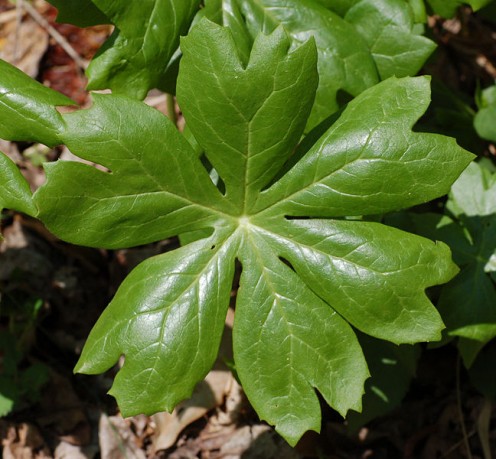
Mayapple Roots
Mayapple roots or American Mandrake, as it is sometimes called, is another herbal medicine that we learned from our native relatives. Catherine Annenontak had taught her eldest son, that this cured warts, worked as a laxative, and to get rid of intestinal worms.
It should never be used by pregnant or nursing women. Using too much of it can be fatal. Still, tests are showing that it may be helpful for leukemia patients, so it may prove to be a much more valuable drug.
Short-Term Storage for Immediate Use of Herbs
Obviously, frequent harvesting and storing fresh herbs throughout the plants growing season, will help keep plant growth manageable.
Additionally, will make your garden look more attractive.
Long Term Storage of Herbs
The rules of the game are simple:
- Harvest a plant when it is in it's prime
- Harvest perennials completely to the ground with a knife or the scissors (like summer savory)
- Harvest woody perennials to no more than 1/3 of the plant (like sage or winter savory)
- Leave some annual herb plants in the ground to reseed
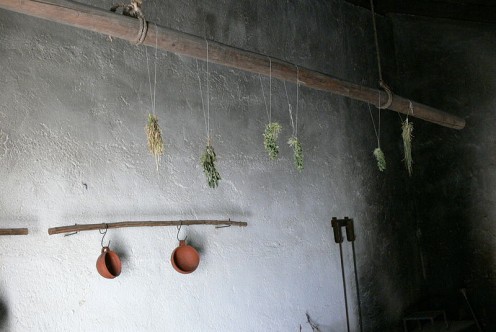
Cleaning Herbs
There are right and wrong ways to harvest certain herbs. Once they are removed from the plant, it's also important to know how to handle them properly. In Emile and Hirma's day, the method was pretty much the same as today, only we didn't have salad spinners and couldn't purchase elaborate herb dryers.
Today, we understand there are right ways and wrong ways to harvest and handle certain herbs. Once they are harvested, it is important to clean them properly. The modern method is:
- To clean fresh herbs, submerge them in the sink, large tub, or bowl
- Fill with cool coarse salted water (about 2 tablespoons).
- Note: The salt water will drive away any insects with damaging the herb.
- Remove herbs from standing water and dry in a salad spinner
- Dry herbs complete by dabbing and blotting with paper towels
Herbs Suited for Drying
Some of the herbs that are well suited for drying are:
- Sage
- Winter savory
- Mint
- Rosemary
- Marjoram
- Oregano
Drying Herbs
Drying herbs requires a dark, airy, place. Most attics are perfect for this activity.
Baby It's Cold Inside
Most herbs are well suited for freezing, just remember that once frozen, they will only be suitable for cooking. Frozen and thawed herbs are not for medicinal purposes. Frozen herbs will not be good for garnishes as they will be wilted and limp.
Freezing Herbs
Freezing herbs wasn't an option for us, as back then, the freezer compartment of the old GE Monitor, was about as big as a loaf of bread.
Today, many herbs are froze with some degree of effectiveness. Some do better at freezing than others. For instance, tarragon and parsley become discolored, although this does not affect either taste or smell.
To freeze herbs:
- Clean and dry the herbs
- Layer them, packing them tightly in plastic freezer containers
- Seal tightly
Herbs can be successfully frozen for three to four months.
Herb Bouquets
Herb bouquets are best preserved for a day or so in water, at room temperature. Do not refrigerate them, this is especially true of basil and cilantro.
Cutting Chives
Cutting chives requires special handling. They need to be cut finely. You can accomplish this by:
- Gathering them tightly in one hand
- Mince with a sharp knife with the other hand
- Be sure to turn your fingertips under to protect your fingers from the knife
Cutting Large Leaves
Techniques for cutting large leaves, particularly basil and mint are simple:
- Stack three to four clean, dry leaves
- Roll them tightly like a cigar
- Slice lengthwise
Removing Tiny Leaves
Removing tiny leaves starts by plucking the leaves from the stems. Next, hold the stem and slide your fingers down the stem, which will essentially severing the leaves from the stems.
Drying Herbs
Eating Flowers
Herb flowers are delicious and often taste like the herb, but sweeter. First, pluck the flower, blossom, or trumpet of the flower from anything green. Some herb flowers that have good flavors are:
- Basil
- Chive
- Marjoram
- Summer Savory
- Thyme
- Winter Savory
Tips for Harvesting Herbs
- In the summer time, herbs in kitchen gardens should be harvested. This helps the plant to grow.
- Harvest young tasty leaves of tender annuals above leaf buds
- Some tender annuals can be harvested by just pinching them back
- Letting the herb go to flower will mean that the leaves will not be as favorable
- Letting the herb go to flower will also mean that some herbs will become bitter
- Some annual herbs (basil, summer savory, and cilantro) live longer if flowers are pinched back
- Once flowered perennials should not be harvested
- Perennials must be harvested fresh below the flowers
- Woody perennials should be harvested at the section where branches grow from the central stem
Warning!
Many of the simple old time folk remedies presented here are for your entertainment and general knowledge. I make no guarantee as to either their effectiveness, or their safety. Consult your physician before deciding, if these remedies or any other such treatments are right for you.

